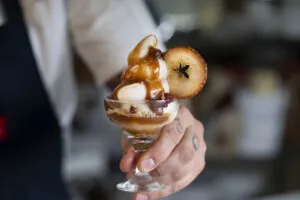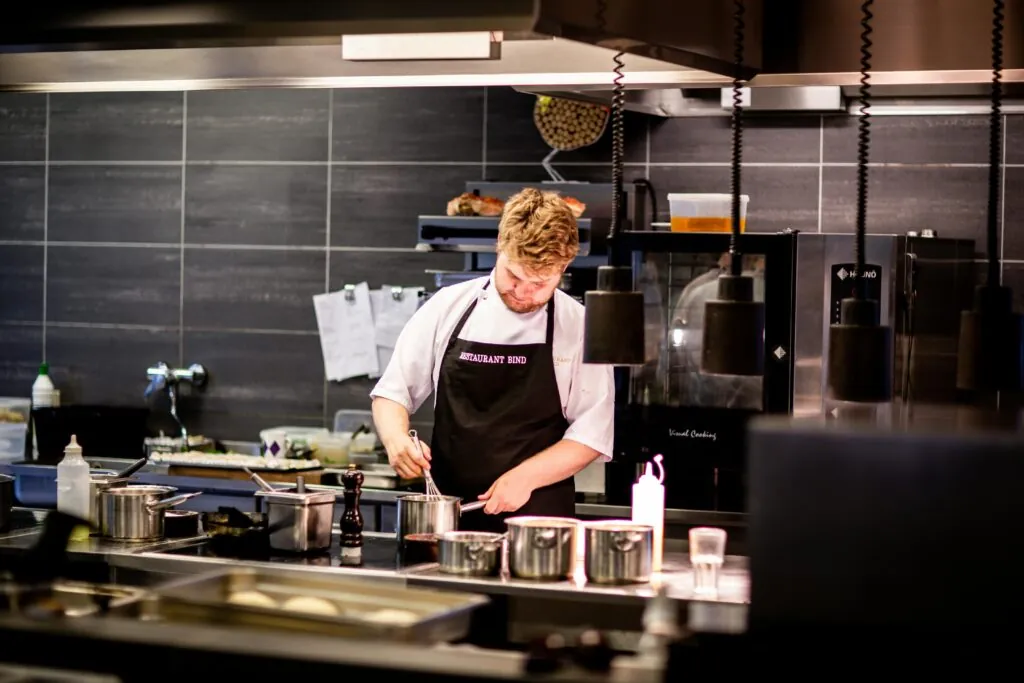Last month, the New York Post published an article highlighting the shift towards serving fancy soft-serve as a cost-cutting dessert option in some of the most acclaimed higher-end restaurants. As restaurant accountants, our eyes glow when we see the terms cost and cutting in the same sentence, especially when ice cream for the people is the result.
Therefore, we had to go straight to the source and understand the economics of this trend and whether it’s as beneficial for restaurants as it may seem. I sat down with Berj Ghazarian, President of Itaberco, the supplier of artisan dessert flavors and mixes to some of the most highly esteemed restaurants in the country, to understand the soft-serve craze and its economic benefits.
Berj has an interesting and multi-angle perspective on this topic because he owns one of the most acclaimed barbecue restaurants in the DC/MD/VA metro area, Bark BBQ, which also serves soft-serve.

Q: Can you tell us what your company does and what type of clients you work with?
Berj: Itaberco focuses on manufacturing premiere artisan flavorings and premixes for the dessert and specialty beverage industry. To draw an analogy, think of making desserts as an art form. An artist always needs a good quality canvas to paint on, which is the foundation and platform for their art; our premixes provide chefs with those canvasses. It’s a blank canvas with texture, mouthfeel, and everything they need that’s simplified into one mix. They can then add milk, cream, puree, or juice to create their foundation. Our artisan flavorings or compounds are like the artist’s paint palette, a high-quality paint designed to work with a high-quality canvas (our mix). Chefs can choose to use some of our flavors, some of theirs, or a combo of both to produce all types of desserts. All of these products are made using natural ingredients. That’s what our company does; we produce those products and help the clients implement them in their menus.
In terms of the type of clients we work with, it’s easier to mention who we don’t work with. We try to stay outside of the fast-food space. One of our core values is quality over cost. We focus on producing premium quality products which can put us out of range for some fast food concepts. Fast casual or higher-end quick-service concepts focused on quality ingredients are the exception. We work with many restaurants, cafes, and bakeries on the dessert side. On the beverage side of the business, we work with many breweries, bars, live music venues, or other businesses that serve and produce flavored seltzers and cocktails. We also play in the confections space, where our flavorings are used to make candies, gummies, and CBD edibles. Any kind of sweet dessert or beverage that needs high-quality ingredients is where we play.
Q: Restaurants try to avoid keeping cash in inventory as much as possible and reduce spoilage and waste. How does your product help with this?
Berj: Whether you buy in a fresh, ready-to-use form of mix versus a dry form (like ours), all soft serve is comprised of the same fundamental ingredients such as milk, cream, sugar(s), stabilizers, and flavoring (vanilla extract, etc.). The shelf-life of a “fresh” or traditional ice cream mix in wet form that combines everything that can be poured directly into an ice cream machine is 30-45 days and must be kept refrigerated at all times. It takes up a lot of space because most of it is water. A typical ice cream mix is about 60-70% water, so you’re taking up refrigeration space, and once it opens, the shelf-life declines further. Pastry chefs love using puree, which is great, but many of them come to you frozen, meaning they have a limited shelf-life once they’re unfrozen. And after you open it, you only have a few days to use it. There can be more waste with these traditional dessert preparation methods.
Our soft serve mixes come in dry form and are shelf-stable even after opening. Our flavor compounds are concentrated pastes that are also shelf stable, even after opening. They’re very concentrated, occupy little space, and can sit in the pantry for over a year. As a result, you save space and have very little waste. You’re not wasting space on water; you’re just mixing our powder or compound with a product that a restaurant or bakery probably already has in inventory, such as milk, water, etc. It helps significantly with inventory turnover and space limitations, especially if you are a high-volume operation. This applies to all our products – pastry mixes, gelato mixes, soft serve, etc.
Q: Have chefs gravitated towards soft serve from gelato, regular ice cream, pastries, etc.? If so, why?
Berj: I believe so. We’ve been promoting this concept of craft soft-serve for about 10 years, and it continues to grow yearly, especially in the fine dining and fast-casual space. I think it comes down to three reasons.
First, there’s a nostalgia aspect to it, reminding us of our childhood and things we got excited about as kids. As Americans, many of us grew up with soft serve being a sweet treat we all loved as kids.
Second, soft serve has always had a stigma attached to it because it was typically associated with fast food served by McDonald’s, Wendy’s, Dairy Queen, etc. where it all started. Therefore, many soft-serve products produced until 10 years ago were catered towards that marketplace. The new generation of chefs are breaking that stigma and creating more trust and honesty between the kitchen and the customer (just look at Milk Bar!). In the last 10 years, there’s been a diversion from the white tablecloth traditional style of fine dining to a more upscale casual trend, and this is pushing boundaries a bit and destigmatizing trends like soft serve in finer establishments.
Finally, Soft serve is a great way to showcase dessert flavors because it’s churned fresh. Growing up as a kid, one of my favorite experiences was standing by the gelato machine in my parent’s gelateria and eating fresh gelato straight from the machine; there’s no feeling like it. There’s no better sensation of ice cream than that because once it goes into a freezer and hardens, the result upon scooping and serving is never the same. But soft serve, if done right, is that fresh sensation on demand at any moment. It’s a product served at 18 degrees Fahrenheit, as opposed to hard ice cream from Jennis, Van Leuwen, etc., served at zero degrees Fahrenheit. That temperature difference has a huge impact on the sensations on the palate. This allows pastry chefs to get creative with fresh-tasting desserts because they can infuse many flavors into this fresh sensation versus working with products that have to be stored, frozen, or refrigerated.
So, it’s a combination of the nostalgia effect and creativity resulting in this trend.

Q: Why has the perception of soft-serve changed from a fast food commodity to an upscale dining treat?
Berj: I think it has to do with education and exposure. I was first inspired by soft-serve when I went to Japan. The Japanese do it right; they are very passionate about it and get very creative. Companies started making dry products that are very high quality and customizable and started giving pastry chefs more control versus buying the same mix that a fast food chain uses. Once pastry chefs realized that the soft serve mix would not limit their creativity, things changed a bit. It’s also a very sexy Instagramable thing, so that’s probably helped with promoting it.
Q: What are upscale full-service and fast-casual restaurants charging these days for craft soft serve?
Berj: Finer dining establishments charge between $12 and $ 15 for a soft-serve dish, depending on the service size and toppings. I just pulled up the menu for one of our clients, Albi, in Washington, DC, and they’re charging $10 for their soft-serve dish, which I think is a fair price for the serving size and the way it’s presented. On the quick service/fast casual side, the average price is around $6 per serving, plus maybe $1-3 for add-ons. For example, one of our customers, Milk Drunk in Seattle, a fun, elevated, and high-quality fried-chicken, milkshake, soft-serve experience, charges $6 per serving plus $1-3 for additional toppings.
Q: Can you break down the cost of goods sold (COGS) or the plate cost of a soft-serve dish in a finer dining full-service concept versus a hot fudge sundae at McDonald’s?
Berj: The factors going into the COGS calculation are the butterfat percentage, quality of the ingredients and flavorings, and overrun.
Butterfat is what dictates the difference in dairy costs. The higher the butterfat, the more expensive the dairy. Soft serve mix used in fast food is probably around a 4% butterfat, which is on the lower side of butterfat; the minimum FDA requirement for butterfat to call something “ice cream” is 10%. In the dessert world, we typically use cost per ounce as the cost measure. The cost per ounce for McDonald’s soft serve mix is probably around 6-8 cents, whereas our product ranges from $.9-$.16 per ounce, depending on the recipe the customer decides to use. For example, if you decide to use pure pistachio paste and high quality milk and cream, you are going to see your COGS on the higher end of that spectrum.
There’s also the concept of overrun when costing out a serving of ice cream. Overrun is the amount of air incorporated into ice cream when churning it. Overrun equals free money. It’s the opposite of shrinkage; the more you can achieve, the lesser your cost of goods sold. So fast food chains want more overrun in their product, but it comes at a quality cost. The more overrun, the less luscious, dense, and decadent the dessert feels. For example, fast food soft serve is comprised of probably about 50-70% overrun (or air). The opposite is that our customers, finer dining establishments, and fast-casual concepts are running about 20-30% overrun, much less air, very rich, decadent, so you’re selling more product than air. That’s why you notice such a big difference when eating soft-serve from fast food restaurants versus Laserwolf in New York or similar restaurants.
So, after factoring in the cost per ounce and overrun, here’s the approximate breakout:
- $.40-45 per serving of soft serve
- + $.10 per cone/cup
- + $.20 per hot fudge
- = about $.75 per serving for a $4.59 hot fudge sundae from McDonald’s
The COGS breakdown for a nicer restaurant using our product comes out to:
- $.70 per serving for soft serve
- + $.10 per cone/cup
- + $.50 for garnishes such as date molasses, cookie crumbs, olive oil, etc.
- = about $1.30 per serving for a $12 soft-serve dish
That’s a 10% plate cost, one of the highest-margin menu items in a restaurant!
Q: Is there any waste?
Berj: Waste is a fairly insignificant factor in a well-designed soft serve program. I like to factor in 2-5% waste, which will come from over-serving, or maybe one serving didn’t look so pretty, so you had to toss it out or give it to staff. Soft serve doesn’t have a lot of waste; most of it is whatever is left in the machine when you must clean it, which is about twice a week. Therefore, higher-volume restaurants notice less waste because they utilize more batches. You can also freeze and sell whatever is left in the machine as another item, such as a to-go item, or use it as an ingredient in other dishes.

Q: The food and beverage director at Laser Wolf said, “Soft serve doesn’t require a chef to craft each cup during service like pastries do, it’s all in the prep.” Can you break this down for us and how it translates to reducing labor costs?
Berj: I agree with this statement, and if you read it carefully, you’ll understand that it’s written very thoughtfully. It says, “doesn’t require a chef to craft each cup” during service. So, the pastry chef’s role here must come into play when ideation and recipe development are done. Hopefully, you’ll do that once a month or a quarter when changing your flavors to match the rest of your menu. Once you develop that recipe, delegating to any staff level is very easy. As long as someone knows how to mix and blend milk and powder. It can be any of your prep cooks; it doesn’t have to be a trained pastry chef. You can prepare the mix throughout the day, label it, then put it in your walk-in.
When it comes to serving it, you don’t need a pastry chef, unlike a fancy-plated dessert, where you have ice cream to blend under a paco jet and quenelle it on a plate. You’re not unmolding, piping, or moussing anything. It doesn’t require a high level of technical pastry skill. In many restaurants that use our product, the people preparing the soft serve are not highly trained chefs. They can be front-of-house team members or even the bar team. Anyone who’s been trained around food can do it well. When a ticket comes for a soft serve dish to the kitchen, the turnaround time to fire that item is about 90 seconds to 2 minutes. This is a lot faster than any other dessert. It’s cutting down labor for preparation and sharing it with other roles. For example, a bartender making most of their wages from tips now contributes towards delivering a dessert dish. You’re getting more efficiency out of your labor on these desserts.
Q: How would somebody buy your product and get trained on it?
Berj: We sell through distributors that share our values, which tend to be specialty distributors focusing on higher-quality products. For example, International Gourmet Foods (IGF) is one of our distributors. We don’t have distribution yet in some parts of the country, so they could order directly. Because all our products are ambient, the supply chain is not too difficult. If you’re a restaurant in Alaska, we could ship the product quickly via UPS. We always have at least one corporate pastry chef in-house who serves as an outsourced pastry chef for our clients and does onboarding, training, recipe development behind the scenes, troubleshooting, etc.
Q: The naysayers will argue that people don’t go to fancy restaurants to eat soft serve from a machine and that $12+ for a cup of soft serve from a machine is unacceptable. Some will even say that it is a fad. On the other hand, most people would agree that everyone loves ice cream. Like Ted Lasso said, “Ice cream is the best; it’s like seeing Billy Joel perform live; it never disappoints.” What do you say to the naysayers?
Berj: I love the Ted Lasso quote and agree 100%. Here’s the thing: any kind of frozen dessert, whether ice cream, sorbet, soft serve, gelato, etc., comes out of a machine just like pizza comes out of an oven and pasta comes out of an extruder. I think it’s more about the stigma we were talking about earlier. Once that stigma breaks, people will realize it’s just as good as any other frozen dessert, if not better. I feel that more and more, especially the younger generation, is opening up to this concept of fancier restaurants doing soft serve because it bridges the honesty gap between the kitchen and the guests, it removes any formality and creates trust because they’re both agreeing that soft serve is something we can all agree we enjoy, and we shouldn’t shy away from serving it because of stigmas. It’s something we can both relate to.
Q: What are other economic factors to consider?
Berj: There is apprehension about getting into soft serve because of concerns about the equipment. A soft serve machine is expensive, and it requires maintenance. Some chefs may have experienced horror stories due to buying a used machine that was always breaking down and being a challenge for them or not receiving the proper training. You need a new machine or machine serviced by a reputable company to do it right. The depreciation and equipment must be factored into the costs to ensure a sufficient return on investment (ROI). Soft serve is not the right fit for every restaurant, but for the right restaurant, it can be a great profit center that doesn’t detract from the fine dining experience.
A 200-seat restaurant must invest about $20-25k for a machine and installation. Your maintenance costs are low for the first couple of years since the machine is under the manufacturer’s warranty. Let’s say $400-500/year in maintenance costs that later increase to $600-700 afterward. But if you care for the equipment, its useful life should be at the very least 10 years. So, you can use those numbers to determine ROI in forecasting. There are also leasing options that can be considered from companies like Taylor. Some lease-to-own programs can be considered. If you roll out the soft serve program strategically, you could quickly pay off the machine. I am going to keep advocating for soft-serve for the right people!







